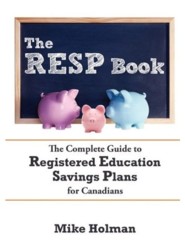I’ve written extensively about RESP accounts which are educational savings accounts available to all Canadians. Quebec has decided to do one better and offers a special Quebec educational savings grant which is available on top of the normal federal RESP CESG grants.

The grants work in a similar fashion to the federal RESP grants except they are half as much. This means that the RESP is that more valuable to a Quebec resident since the basic grant will be 30% of contributions instead of the 20% that residents of all the other provinces get.
Both federal RESP grants and QESI grants are paid in the same account so any contributions discussed below refer to your normal RESP contributions. You don’t have to set up separate accounts or have separate contributions.
Here are the QESI Quebec RESP grant rules
- The grant amount per year is 10% of the first $2500 contributed per beneficiary.
- Max $250 grants credit per tax year per beneficiary
- The lifetime maximum grant amount per beneficiary is $3600.
- There is a $250 grant carry forward (as of 2008) so you can actually contribute $5000 and get $500 QESI grant if you have enough room.
Timing of QESI grant payments
QESI grant payments only get paid once a year. If you make any contributions in a calendar year, your financial institution will send that contribution information to the government by the end of March of the following year. The financial institution should receive the grant money within 90 days and will deposit the grant into your account.
Keep in mind that even if the institution sends the information earlier in the year (ie January) – that won’t necessarily speed up the process. The QESI process is new, so it is very possible that there will be delays both on the government side and the financial institution side.
This means there can be a long time between the contribution and grant.
For example if someone contributes $1,000 to a Quebec RESP in April of 2012, their financial institution will send that information in March of 2013 and will put the grant in the account up to 90 days later which will be in June of 2013. So if you contribute early in a calendar year, it’s possible that the grant won’t be paid for up to 18 months later.
Supplemental increase for lower income families
If the net family income is $42,707 or less, then extra grants of 10% of net contributions will be paid up to a maximum of $50 per beneficiary per tax year.
If your net family income is between $42,707 and $85,414 then you will get extra grants of 5% of net contributions up to a maximum of $25 per beneficiary per tax year .
The supplemental QESI grant is payable only to an RESP that is either an individual plan or a family plan where all the beneficiaries are siblings.
Grant room or accumulated rights (as the Quebec government likes to call them)
Every eligible child begins to receive QESI room at birth, or on Feb. 21, 2007, whichever is later.
The Quebec government has termed grant room for the QESI basic amount as “accumulated rights”. I think something got lost in the translation of those terms. 🙂
These grant rights accumulate at a rate of $250 per year.
As of 2008, any QESI rights accumulated during previous years can be added to the basic amount up to a maximum of $500 a year.
The supplementary QESI credit cannot be carried forward if not used. The carry forward only applies to the basic QESI grant.
Eligibility for QESI grants
Basically the same as federal government CESG.
Beneficiary Eligibility Critieria
Every child up to and including age 17 is eligible to receive the QESI grant, provided the child:
- is a Quebec resident as of Dec. 31st of the taxation year being applied for;
- has a valid social insurance number (SIN);
- is named as a beneficiary to an RESP where the QESI is offered;
- meets the CESG 16/17 year-old rules;
- has a contribution made to an RESP in their name; and
has available grant room.
You shouldn’t need to apply for this grant – the financial institution should do it for you. It should be noted (as Steph pointed out in the comments) that not all financial institutions offer this grant. It is important for you to research which ones do before opening up an account.
Here is the link to the Revenu Quebec page that lists the companies that are or that will eventually become compliant:
http://www.revenu.gouv.qc.ca/en/citoyen/credits/credits/iqee/fournisseurs_reee.aspx
Make sure to ask at which step of the process they are… (already compliant or in the process of) before, so that you won’t be disappointed in the end !





